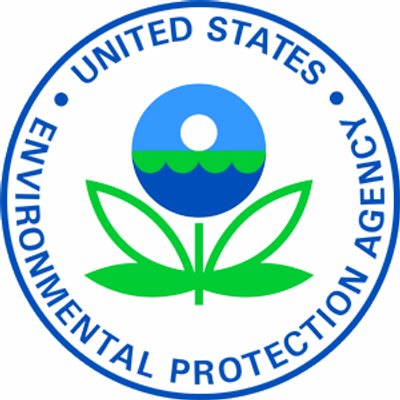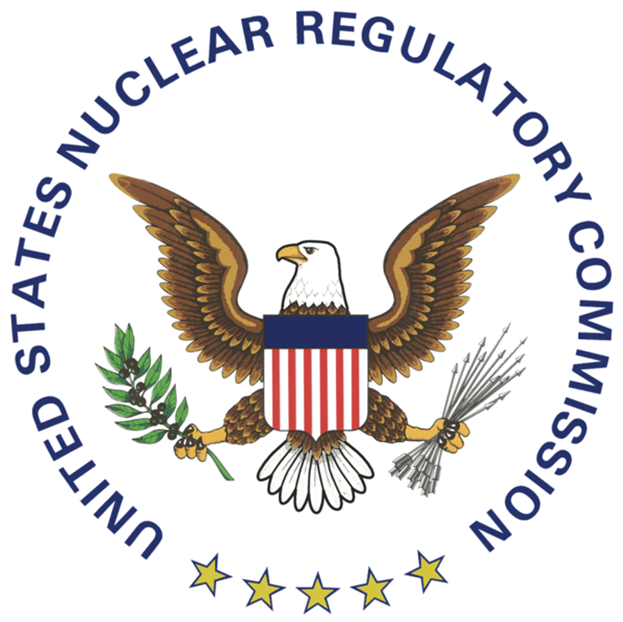Part 2 of 3 Parts (Please read Part 1 first)
One of the comments to the NRC on relaxation came in the form of a letter from Olav Christianson who manages a nuclear medicine practice in Pittsburgh. He said, “If hormesis is incorrect or only applies under certain circumstances, removing the ‘as low as reasonably achievable’ principle could result in a large number of excess cancers. Until we fully understand the health risks, we should continue to employ the most conservative approach.”
Mark Miller is one of the three petitioners from SARI. He worked at Sandia National Laboratories in Albuquerque, New Mexico which is one of three nuclear weapons design facilities. One of his duties was to protect workers from excess radiation exposure. He sent a letter to Scott Pruitt, the Director of the EPA. Miller commented that he believed that the campaign of the Trump administration to reduce government regulation might be interested in his idea of radiation hormesis. A month after his letter, Pruitt proposed that the EPA change its regulations to include the idea of radiation hormesis.
A second petitioner from SARI is named Carol Silber Marcus. She is a physician who specializes in nuclear medicine and a UCLA professor of radiology. At one time, she served on the NRC Advisory Committee on the Medical Use of Isotopes. She once told an interviewer that she worked as a consultant for lawyers defending clients against radiation overexposure claims and also consulted for radiological pharmaceutical companies. She published an article in 2016 in the journal Dose Response, a magazine created by believers in radiation hormesis to spread their ideas. She suggested that there should be a strike by organizations subject to the ALARA regulations to pressure the NRC to change its regulations. She has also said that she includes some radiobiology in her instruction to physicians and she tells them that the government is lying to them about low-does radiation exposure.
Mohan Doss is the third member of SARI that signed the petition. He is a medical physicist and a professor at the Fox Chase Cancer Center in Philadelphia, Pennsylvania. He believes that there are well established benefits of low-level radiation exposure. He said, “There’s plenty of evidence that shows that cancer risk goes down after people receive exposures to low levels of radiation. If radiation exposure standards were relaxed, it would result in important savings for the nuclear industry.”
Doss admits that when a person is exposed to a small amount of radiation, there is some cellular damage. He claims that this causes the cells to repair themselves and it also triggers the immune system. He says that the results in better overall health because the immune system is stronger. He also rejects the idea that children and fetuses are at any special risk from low-dose radiation because their immune systems are also strengthened.
These are serious credentialed experts with respect to the effects of radiation on health but their conclusions about radiation hormesis are not shared by the majority of the experts on radiation and health. These experts insist that even low doses of radiation that harm cells can cause uncontrolled cell growth and replication years later. They also insist that children and fetuses are especially vulnerable to such dangers. This has been the majority view of radiation damage for at least seventy years. Last April, the nonprofit National Council on Radiation Protection and Measurement (NCRPM) issued the results of a meta-study requested by the U.S. Congress and funded by the NRC.
Please read Part 3
Blog
-

Trump Administration Considering Application Of Questionable Theory of Radiation Hormesis For Radiation Exposure – Part 2 of 3 Parts
-

Geiger Readings for Mar 07, 2019
Ambient office = 100 nanosieverts per hour
Ambient outside = 77 nanosieverts per hour
Soil exposed to rain water = 80 nanosieverts per hour
Asparagus from Central Market = 73 nanosieverts per hour
Tap water = 85 nanosieverts per hour
Filter water = 70 nanosieverts per hour
-

Trump Administration Considering Application Of Questionable Theory of Radiation Hormesis For Radiation Exposure- Part 1 of 3 Parts
Part 1 of 3 Parts
Since World War II, there have been stringent regulations that apply to any business or other institution in which nuclear radiation is present. These regulations apply to hospitals, uranium mines, nuclear power plants, nuclear waste disposal facilities, industrial sites that utilize radioactive materials for testing, private laboratories etc. These rules are based on what is called the linear no-threshold model. This model indicates that the biological dangers of radiation increase linearly with the level of radiation and that there is no minimum level of radiation that is safe.
The regulations are referred to as the ALARA standard which stands for “as low as reasonably achievable”. Such things as isolation units, elaborate shielding, specialized air cleaners and filters and stringent worker training are required by these federal standards. Many businesses consider these radiation standards to be unnecessarily burdensome and expensive. Some estimate that billions of dollars have to be spent to adhere to these standards.
Various groups have lobbied to relax these federal radiation regulations in the past but have had no success. However, in recent years, a new and relatively unknown group called the Scientists for Accurate Radiation Information (SARI) has been peddling proposals for relaxing radiation exposure standards. SARI was created in 2013 by members of the nuclear industry who wanted to soothe public fears of radiation that were exacerbated by the 2011 Fukushima nuclear disaster.
SARI supports an alternative theory of the biological effects of radiation known as “radiation hormesis”. This theory claims that things such as radiation that may be dangerous large quantities may actually be beneficial to health in low doses. This is rejected by most scientists in the field.
Despite the questionable theory they promote, a member of SARI has been appointed to head a Radiation Advisory Panel at the Environmental Protection Agency which assists in the establishment of federal radiation dose standards. Several suggestions for relaxation of radiation standards on the part of the Advisory Panel are actually being considered for adoption by the Nuclear Regulatory Commission.
Members of SARI have held jobs related to radiation protection at the EPA, the Department of Labor, the Department of Energy and DoE subagencies involved in the construction of nuclear weapons at nine federal factories around the U.S. Members have also worked in nuclear medicine, the commercial nuclear industry, and as college professors who teach nuclear medicine and nuclear hygiene.
In 2015, SARI petitioned the NRC to drop its current approach to radiation safety. They wanted the NRC to accept that not only are small doses of radiation not dangerous to human health but might be beneficial. The NRC has been treating the petition seriously. They created a working group to study the issue. An NRC spokesperson said that that study had been completed and the five members of the NRC will take up the subject sometime this spring.
If the NRC adopts the new SARI supported relaxed radiation exposure standards, it will result in huge savings for members of the nuclear industry. They will be able to carry out various projects involving radioactive materials without spending the money now necessary to protect their works and the public from low dose exposures. However, when the NRC solicited public comments on the changes, only one hundred out of over six hundred comments were in favor of any relaxation of radiation exposure standards.
Please read Part 2 -

Geiger Readings for Mar 06, 2019
Ambient office = 97 nanosieverts per hour
Ambient outside = 105 nanosieverts per hour
Soil exposed to rain water = 107 nanosieverts per hour
Anaheim pepper from Central Market = 73 nanosieverts per hour
Tap water = 84 nanosieverts per hour
Filter water = 74 nanosieverts per hour
-

Geiger Readings for Mar 06, 2019
Ambient office = 97 nanosieverts per hour
Ambient outside = 105 nanosieverts per hour
Soil exposed to rain water = 107 nanosieverts per hour
Anaheim pepper from Central Market = 73 nanosieverts per hour
Tap water = 84 nanosieverts per hour
Filter water = 74 nanosieverts per hour
-

President Trump Reduced The Size Of The Bears Ears National Monument To Benefit Energy Fuels Resources
President Barack Obama designated the Bears Ears National Monument (BENM) in December of 2016 in San Juan Country in southeastern Utah by Presidential Proclamation. The original size was about two million square miles. The area inside the monument was largely undeveloped and included a variety of historic, cultural and natural resources.
Energy Fuels Resources (USA) is a subsidiary of Energy Fuels Resources (CAN). Most of EFR’s mining takes place in the U.S. Southwest and its headquarters is located in Denver. However, it is based in Canada because the Canadian regulatory environment is considered friendly to mining companies. Sixty percent of mining companies world-wide are based in Canada. EFR has the biggest portfolio of in-ground uranium resources of any company in the U.S. and is the largest producer of uranium in the U.S. EFR provides mining and milling services to other companies.
The original BENM also included or abutted three hundred and fifty uranium mining claims filed by EFR. EFR owns the only uranium mill in the U.S. which is located a few miles from the boundary of the monument. Even being near the monument carries additional regulation for such things as mines and mills.
In 2017, representatives of EFR met with a senior Department of Interior (DoI) official to lobby for reduction of the BENM. A month later, President Donald Trump ordered a surprise review of BENM which involved the DoI official who met with EFR. When the review was finished, Trump ordered that the BENM be reduced by eighty-five percent. The reduction of BENM removed more than one hundred EFR uranium claims from the BENM.
It has been announced that the House Natural Resources Committee chaired by Arizona Representative Raul M. Grijalva is going to hold a hearing in March to review the DoI review of BENM. The Committee is investigating whether or not the 2017 review of BENM “had a predetermined outcome of shrinking Bears Ears to benefit the uranium sector generally and Energy Fuels Resources specifically.”
Grijalva said that if it could be proven that anyone involved with carrying out the review of BENM had met with EFR before the review started, then “all my suspicions as to the motivation behind the shrinkage would be validated… I think it would make our need to get at the bottom of it … it would make it even more significant.”
Ryan Zinke was a Secretary of the Interior under President Trump but was forced to resign under the burden of a variety of charges of corruption. Zinke has been asked to attend the Committee hearings by Grijalva but he declined the invitation. Considering his record of corrupt activities while Secretary of the Interior, it would be likely that Zinke used his power as Interior Secretary to help facilitate the reduction of BENM to benefit EFR.
It would be a major environmental crime against the citizens of this country to subject the unique resources of the original BENM to the degradation and pollution attendant on the mining of uranium. There are other sources of uranium in the U.S. and there is no shortage of uranium that threatens national security.
